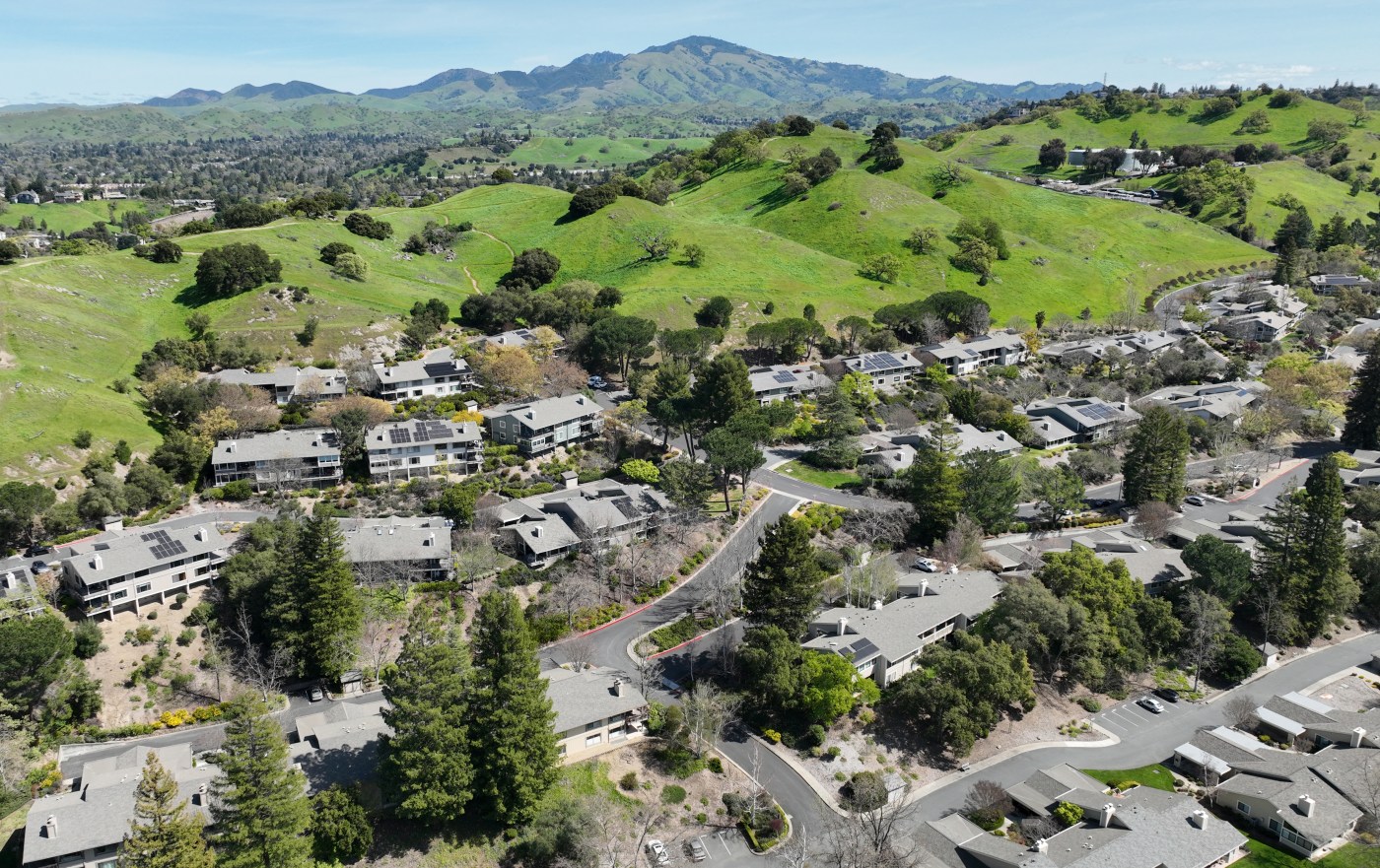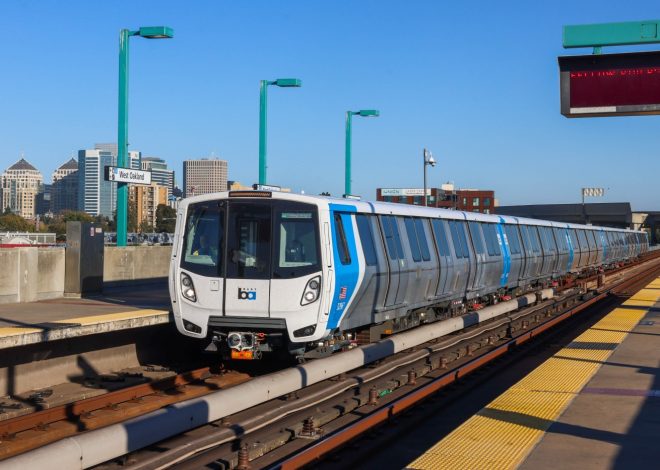
Here’s where HOA fees have surged the most in the Bay Area
In the Bay Area, a fixed-rate mortgage isn’t enough to keep your housing costs steady.
Homeowners association fees — which pay for everything from landscaping to garbage collection in condos, townhouses and other developments — increased a median of 30% in the Bay Area from 2019 to 2024, according to data compiled by Redfin for this news organization. That outpaces inflation in that time period, which increased about 22%.
When Greg Knoke, 43, bought a condo in his 28-unit building in San Francisco’s Mission District in 2017, his HOA dues were $600 a month. Now, they’re $960.
“There’s so much inflationary pressure,” said Knoke, who serves on his HOA board. “Our costs for utilities, janitorial services, fire alarm inspections and repairs — all of that has been going up.”
Legally, associations can only increase fees by a maximum of 20% each year. They are also required to distribute their annual budget report to members.
HOA dues were the highest in Walnut Creek, home to the 6,700-unit Rossmoor senior living community. HOA fees range from about $1,200 — which covers residents’ cable and internet, among a number of other amenities — to $2,000 in certain buildings within the community that offer daily meals and housekeeping. Most residents at Rossmoor saw a 10% increase in fees last year.
San Francisco also has some of the highest fees. The city is home to a number of new luxury high-rises, like the Harrison in Rincon Hill, where HOA fees cover a 24/7 doorman, a fitness center and heated pool. The city also has a number of older condo buildings, which have raised fees to cover increased maintenance.
One of the other major factors driving up HOA rates? Rising insurance premiums. Many of the state’s major home insurance providers, from State Farm to Allstate, stopped writing new policies here after fires in 2017 and 2018 wiped out the industry’s profits.
Since then, insurers have been pushing for rate increases to reflect the loses expected in future wildfires. State Farm — which covers 15% of homes in California — has asked regulators to approve an emergency interim rate hike that would increase homeowner premiums by an average of 22%. Last year, regulators approved an average rate increase of 34% for Allstate customers.
In 2024, the insurer for Knoke’s building raised rates by nearly 40%. While Knoke and his board were able to find a cheaper policy with a new company, the premium was still 20% more than its previous rate.
Some condo associations are now reliant on California’s lender of last resort, the FAIR plan, which in 2023 increased its commercial coverage limits to allow more condominiums to sign up. The plan’s risk exposure as of March 2025 was $599 billion, a 31% increase from just six months earlier.
As prices increase, many larger condo complexes are deciding to only carry enough insurance to cover damage to some of the units.
Take Rossmoor, the sprawling senior community in Walnut Creek. Its master insurance policy provides $1 million in coverage per unit. But that coverage only extends to about 44% of the total dwellings.
This kind of partial coverage hasn’t always been a red flag to insurance companies: fires or earthquakes might damage some homes, but they’d likely spare many others.
But now, that calculus is shifting. California’s wildfires don’t just threaten individual homes — they consume entire neighborhoods. Mortgage brokers now want to see more comprehensive coverage, and are avoiding properties they consider underinsured.
Some 168 condos in the five-county Bay Area are on a ‘mortgage blacklist‘ drafted by Fannie Mae, a government-sponsored entity that purchases home loans and sells them to insurers. Inclusion on a blacklist can make it nearly impossible to get a traditional loan.
California also mandates certain inspections for condo associations, which can also add costs.
Justin Roño, a Los Gatos-based lawyer with Pratt & Associates, said that many HOAs have had to increase dues to comply with California’s SB 326, a law that mandates balcony inspections in condo buildings with three or more units. Condos are required to complete inspections by Jan. 1, 2026, and they must be reinspected every nine years.
“After this bill went into effect, it showed that many associations lacked reserves,” Roño said.
Florida, following the collapse of the Surfside residential tower, instituted a law requiring condo associations to fully fund reserves for projected future repairs. California doesn’t do the same.
Some older HOAs with low dues are now having to scrape together the funds to address repairs they didn’t plan for, saddling homeowners with extra monthly costs they didn’t expect.
“If you have an HOA that wants to keep dues low, that can lead to inadequate funding when big projects are necessary,” Roño said.
Some want more transparency from HOAs. Rep. Carl DeMaio, a San Diego Republican, this year brought forward a bill that would have required associations to follow open meeting laws, similar to local governments, at the risk of having their decisions voided if not followed. But the bill was killed in the Assembly Housing and Community Development Committee last week.
While HOA fees have been on the rise, condo prices haven’t grown as quickly. The prices in the San Francisco-Oakland-Hayward metro area increased 3%, and prices increased 12.7% in the Sunnyvale-Santa Clara-San Jose metro area, according to Zillow.
When HOA fees go up, that can hurt the sales price.
Related Articles
Opinion: Fourth-largest economy? Californians can’t even afford essentials
Will San Jose get a new police unit to arrest homeless residents who refuse shelter?
Trump’s proposed cuts to Section 8 rental aid could aggravate Bay Area homelessness
Second phase of North 40 project in Los Gatos may not reach affordable housing goals
The number of new apartments is at a 50-year high, but states expect a slowdown
Chris Huang, 40, bought a two-bedroom, two-bathroom condo in Daly City in 2013, when monthly dues were $430. But around 2020, his homeowners association made plans to start increasing the fee by $100 each year, and is scheduled to hit $1615 a month in 2031.
Worried that buyers would be dissuaded by such high dues, he decided to sell in 2024.
“I didn’t want to be stuck somewhere where I couldn’t move out of,” Huang said. His condo sold for $675,000, around $100,000 less than he had hoped.


